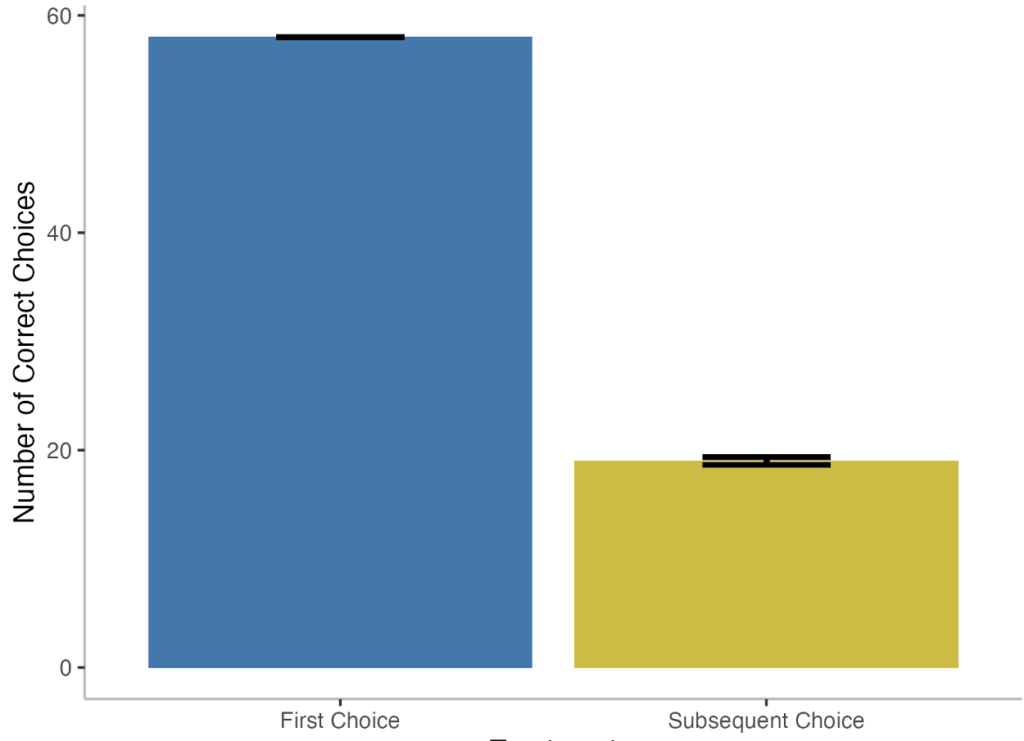Synchrony Cues
For the synchrony experiment, I found that as a group, mandrills did not seem to use synchrony cues to make foraging decisions. There was no significant relation between the food provided as cue and the location a mandrill foraged at. Interestingly, if we only look at the alpha male, the data does suggest he uses synchrony cues.

Every coloured dot in this graph is an individual. If an individual uses synchrony cues, you would expect that this individual has a higher proportion of visiting grape locations when grapes are presented and a higher proportion of visiting carrot locations when carrots are presented. As you can see this is only the case for the alpha male!
The graph also shows that some individuals visited grape locations more, even on carrot days. Three of the ten individuals visited significantly more grape locations than carrot locations.
Olfaction
There was a significant relation between a foraging choice being a correct, and this choice being a first choice. Since for a first choice, the mandrills could only use olfaction to locate the puzzle feeder, this indicates that the mandrills used olfaction to make foraging decisions.

Go to Discussion